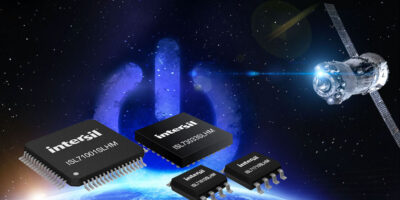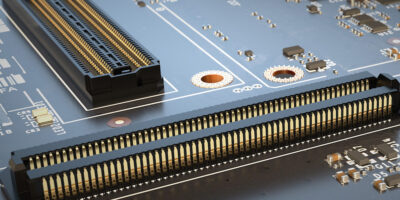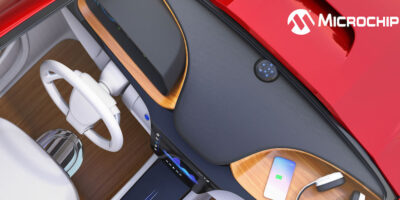Renesas is targeting satellite power management with the ISL71001SLHM/SEHM point of load (PoL) buck regulator, ISL71610SLHM and ISL71710SLHM digital isolators, and the ISL73033SLHM 100V GaN FET and integrated low-side driver.
The ICs combine the board area savings and cost advantages of plastic packaging for space-grade projects missions in medium/geosynchronous Earth orbit (MEO/GEO) with longer lifetime requirements. They can also be specified for small satellites and higher density electronics where they reduce size, weight, and power (SWaP) costs, says Renesas.
The ICs also complement the radiation-tolerant plastic-package ICs Renesas introduced in 2017 for small satellites in low Earth orbit (LEO). Renesas says that its plastic IC offering supports multiple orbit ranges, balancing radiation performance and optimal cost for a variety of satellite subsystems and payloads.
“With every new mission, customers want more functionality, which requires larger satellite payloads and has traditionally translated into increased SWaP for the satellite systems,” said Philip Chesley, vice president, Industrial and Communications Business division at Renesas. He continued that the new ICs offer customers the “SWaP advantages of plastic packaging to save up to 50 per cent of the board area compared to ceramic-packaged devices, while maintaining the reliability and radiation assurance required for higher orbit missions with lifespans ranging up to and beyond 15 years.”
Traditionally, radiation-hardened (rad-hard) ICs were almost exclusively produced using hermetically sealed ceramic packages, which achieved the required reliability but had significant trade offs in terms of size and weight. The Renesas rad-hard plastic ICs help customers reduce their electronics footprint and cost without compromising performance, assured Renesas.
To ensure the plastic ICs adhere to the highest quality for operation in harsh space environments, the ICs have QMLV-like production level testing, and all devices will undergo radiation lot acceptance testing (RLAT).
The production test flow includes 100 per cent CSAM, x-ray, temperature cycling, static and dynamic burn-in, and visual inspection. It also aligns with the SAE AS6294/1 standard for plastic encapsulated microelectronics in space. Additional screening includes lot assurance testing per assembly and wafer lot product for HAST (highly accelerated stress test), life testing, and moisture sensitivity.
The rad-hard ICs are characterisation tested at a total ionising dose (TID) of up to 75krad(Si) for low dose rate (LDR) and at a linear energy transfer (LET) of 60MeV•cm2/mg or LET 86MeV•cm2/mg for single event effects (SEE). The ISL71001SEHM is rated at TID up to 100krad(Si) for high dose rate (HDR).
The ISL73033SLHM low-side driver and 100V GaN FET combines the GaN FET driver and GaN FET in a single package to simply gate design and improve efficiency. It is claimed to reduce area size by 20 per cent compared with an SMD 0.5 rad-hard MOSFET. Tolerance is 30A with 7.5mOhm (typical) RDS on with 100V VDS. The total gate charge is just 14nC (typical). The integrated driver features 4.5V regulated gate drive voltage and 3A/2.8A sink/source capability.
The ISL71610SLHM and ISL71710SLHM digital isolators are based on giant magneto-resistive (GMR) isolation technology, claimed to deliver better radiation tolerance compared with existing space grade optocouplers on the market. Other features are 2.5kV RMS isolation, 1.3A quiescent current, low EMI with no carrier or clock noise and up to 100Mbits per second data rates (ISL71610SLHM) or 150Mbits per second for the ISL71710SLHM.
The 6A ISL71001SLHM/SEHM buck regulator has 95 per cent peak efficiency, fixed 1MHz switching frequency and adjustable output voltage.
Customers can add the new rad-hard plastic ICs to their existing architecture with a new package type and production flow. The ISL71610SLHM and ISL71710SLHM ICs can also be combined with Renesas’ rad-hard and rad-tolerant CAN bus transceiver and RS-422 transceiver product families for use in serial communications systems.
The ISL71610SLHM, ISL73033SLHM and ISL71001SLHM are available now. The ISL71710SLHM will be available in September 2021 and the ISL71001SEHM will be available in Q4 2021.







